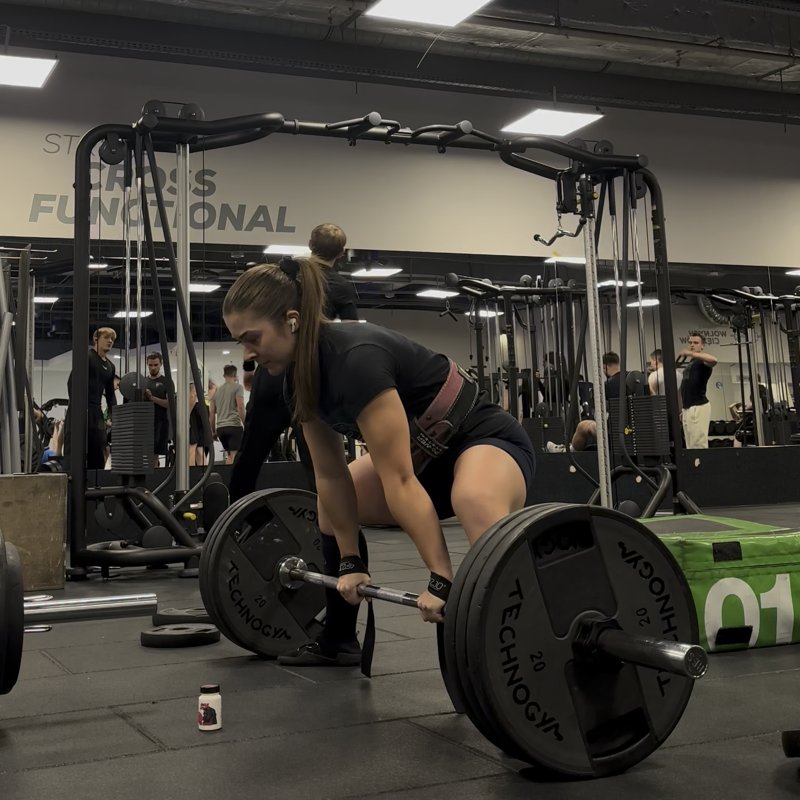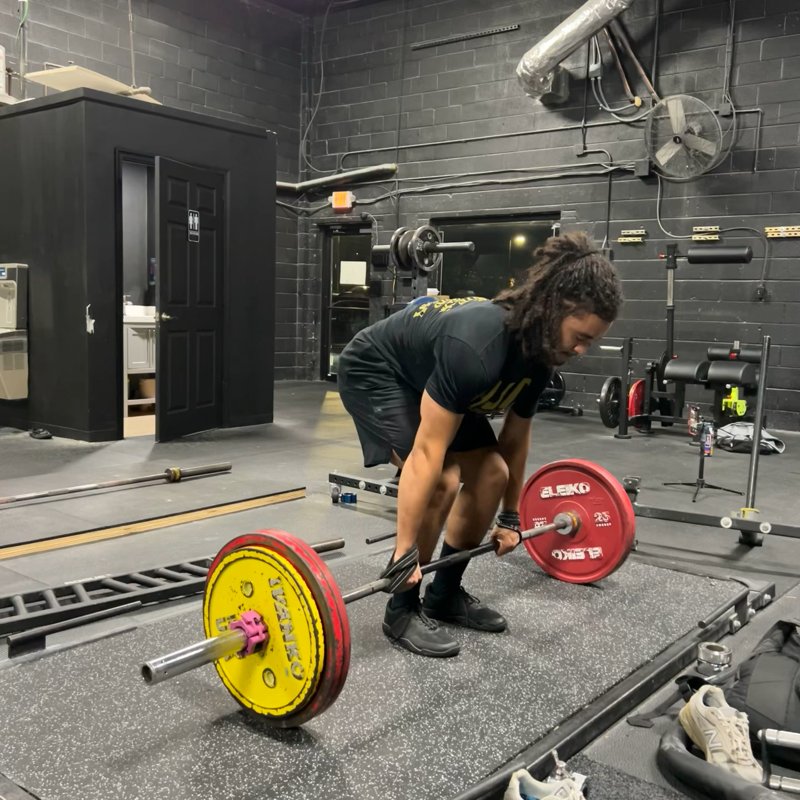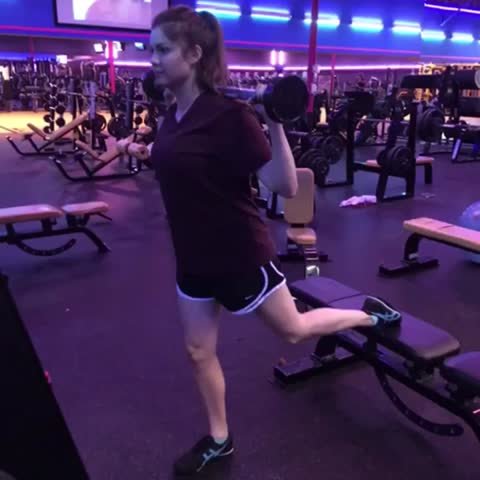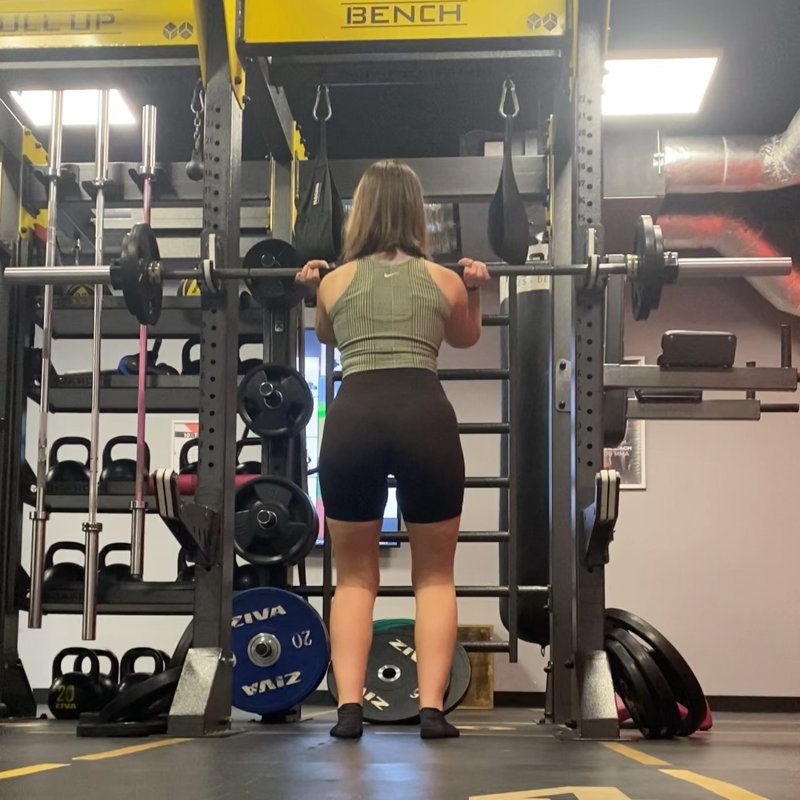Sumo Deadlift: The Ultimate Guide
The Sumo Deadlift is a compound lower body exercise performed with a wide stance and hands inside the legs, emphasizing the quadriceps, glutes, and adductors while potentially reducing range of motion and lower back stress compared to conventional deadlifts.
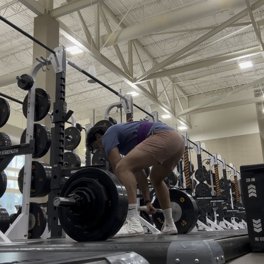
Quick Facts
Key Benefit
Total-body strength with reduced lumbar stress and ROM
Primary Muscles
Glutes, Hamstrings, Hip Adductors, Quadriceps
Secondary Muscles
Abdominals, Calves, Erector Spinae, Forearms, Lats, Traps
Equipment
barbell
Difficulty
Intermediate
Type
Compound
In This Guide
Ready to master the Sumo Deadlift?
Track your progress, see improvements over time, and build strength consistently.
Download GravitusThe Sumo Deadlift is a powerful compound movement that offers unique benefits and mechanical advantages compared to the conventional deadlift. Named after the wide stance used by sumo wrestlers, this variation positions the lifter with feet significantly wider than shoulder width and hands gripping the bar inside the legs, rather than outside as in the conventional style. This wider stance fundamentally changes the exercise mechanics, typically resulting in a more upright torso, less forward lean, and reduced range of motion. These alterations often allow for heavier loads to be lifted while potentially decreasing stress on the lumbar spine, making it an excellent option for those with certain anatomical proportions or those who experience discomfort with conventional deadlifting. The sumo stance shifts greater emphasis to the quadriceps, adductors (inner thigh muscles), and glutes, while still engaging the entire posterior chain. For many lifters, especially those with longer torsos or shorter arms, the sumo variation enables more efficient leverages and a more comfortable pulling position. Whether your goal is to maximize deadlift strength in powerlifting, build overall muscle mass, develop functional pulling power, or train around certain limitations, the sumo deadlift offers a valuable alternative that deserves consideration in your strength training program.
Benefits of Sumo Deadlifts
The sumo deadlift offers several distinct advantages compared to conventional deadlifting approaches.
Reduced Range of Motion
The wider stance and more upright torso position typically decrease the distance the barbell travels, which can allow for heavier loading with less mechanical work.
Decreased Lumbar Stress
The more vertical back angle generally reduces shear forces on the lower back compared to conventional deadlifts, potentially making it more accessible for those with back concerns.
Improved Leverages
For many lifters—particularly those with longer torsos, shorter arms, or greater hip mobility—sumo mechanics provide advantageous leverages that better suit their individual anatomy.
Quadriceps and Adductor Emphasis
The wide stance increases recruitment of the quadriceps and inner thigh muscles compared to conventional deadlifts, offering different muscular development benefits.
Carryover to Conventional Strength
Training the sumo variation can improve conventional deadlift strength by developing overlapping muscle groups while providing novel stimulus and technique refinement.
Technical Precision
The sumo stance often requires and develops greater technical precision, body awareness, and position sensitivity than conventional deadlifting.
Proper Form & Technique
Setup
- Approach the barbell with feet significantly wider than shoulder width—typically 1.5-2 times shoulder width or wider.
- Position feet with toes pointed outward at approximately 30-45 degrees.
- Align the middle of the foot under the bar, with the bar positioned over the midfoot when viewed from above.
- Hinge at the hips to lower your body while maintaining a neutral spine position.
- Grasp the barbell with a shoulder-width grip inside your legs—either double overhand, mixed grip (one hand over, one under), or hook grip.
- Set your grip securedly without lifting the bar.
- Pull yourself into position by "setting the lats"—imagine pulling your shoulders back and down, creating tension across the upper back.
- Drop your hips to a position where your shins are close to vertical and your torso is more upright than in a conventional deadlift.
- Ensure your shoulders are positioned directly above or slightly ahead of the bar.
- Take a deep breath into your diaphragm and brace your core, creating 360-degree tension in your midsection.
Pull
- Initiate the movement by simultaneously driving through the floor with your legs while maintaining a rigid torso position.
- Focus on "wedging" your hips into the bar by driving your feet outward against the floor, as if trying to spread it apart.
- Keep the bar close to your body throughout the entire pull, dragging it up along your shins.
- Maintain a neutral spine position as the bar rises, avoiding both excessive rounding and overarching.
- As the bar passes the knees, focus on driving the hips forward to meet the bar.
- Continue extending the knees and hips until you reach a fully upright position with shoulders back.
- At the top position, stand tall with hips and knees fully extended, shoulders back, and chest up.
- Avoid excessive hyperextension of the lower back at the top of the movement.
Descent
- Begin the descent by hinging at the hips first, pushing your buttocks backward while maintaining a neutral spine.
- Allow the bar to travel straight down, keeping it close to your body throughout the lowering phase.
- Control the descent with your hips and hamstrings rather than simply dropping the weight.
- As the bar passes the knees, begin to bend the knees more significantly to lower the bar to the floor.
- Return the bar completely to the floor before beginning the next repetition.
- Either maintain tension at the bottom for touch-and-go repetitions, or reset completely between repetitions for maximum strength development.
- Take a fresh breath and reset your bracing before initiating the next repetition.
Key Form Tips
Stance Width
Experiment with different stance widths to find your optimal position based on your hip mobility and body proportions.
Toe Angle
Point toes outward enough to allow knees to track in line with feet—typically 30-45 degrees for most lifters.
Bar Path
Keep the barbell close to your body throughout the entire movement, essentially dragging it up your shins and thighs.
Hip Position
Find the highest hip position that still allows you to maintain a relatively vertical shin angle and keep your shoulders behind the bar.
Wedging
Think about "spreading the floor" with your feet to engage the hips and create tension before initiating the pull.
Muscles Worked
Primary Muscles
- Quadriceps: The four muscles at the front of the thigh receive greater activation in sumo compared to conventional deadlifts, particularly during the initial breaking of the bar from the floor.
- glutes: The largest muscle in the buttocks is heavily engaged for hip extension during the sumo deadlift, particularly as the lifter approaches lockout.
- hip adductors: The inner thigh muscles work significantly harder in the sumo stance due to the wide foot position and outward rotational forces.
- Hamstrings: The muscles at the back of the thigh contribute to hip extension and play an important role in maintaining position throughout the pull.
Secondary Muscles
- Erector Spinae: The muscles running along the spine work isometrically to maintain a neutral back position throughout the movement.
- lats: The large muscles of the back help keep the bar close to the body and contribute to upper body stability during the lift.
- traps: The upper, middle, and lower fibers work to maintain shoulder position and assist in maintaining an upright torso.
- forearms: The muscles of the forearm work isometrically to maintain grip on the bar throughout the exercise.
- abdominals: The abdominals, obliques, and transverse abdominis brace to stabilize the spine and transfer force between the upper and lower body.
- Calves: The gastrocnemius and soleus provide ankle stability and assist in maintaining position, particularly with the toes pointed outward.
Common Mistakes and How to Fix Them
Starting with Hips Too Low
Beginning the pull with a squat-like position causes the hips to rise before the bar breaks the floor, wasting energy and compromising leverage. Find the optimal hip height through experimentation—typically, your hips should be high enough that your shins are nearly vertical when viewed from the side, but not so high that your shoulders are behind the bar. Focus on feeling tension in your hamstrings and adductors at the setup position. Practice finding the position where as soon as you begin pulling, the bar breaks from the floor without your hips rising first. Film yourself from the side to analyze hip position and movement patterns if possible. Remember that sumo deadlifts are primarily a hip hinge, not a squat, despite the wider stance.
Knees Caving Inward
Allowing knees to collapse inward during the pull reduces force production and increases injury risk. Focus on actively pushing your knees outward in line with your toes throughout the entire movement. Cue yourself to "spread the floor apart with your feet" to engage the hip external rotators and maintain proper knee position. Consider temporarily using lighter weights while establishing proper motor patterns. Strengthening the hip abductors and external rotators with targeted exercises like banded side steps, clamshells, and glute bridges can address underlying weaknesses. Using a resistance band around the knees during warm-up sets can provide proprioceptive feedback to reinforce proper knee tracking.
Bar Drifting Forward
Allowing the bar to drift away from the body reduces leverage and increases lower back stress. Focus on keeping the bar in contact with your body throughout the entire pull by engaging your lats to actively pull the bar into you. Think about "protecting your armpits" by pulling your shoulder blades down and back before initiating the pull. Use the cue "drag the bar up your legs" rather than thinking about lifting the bar upward. Check your setup—the bar should start over mid-foot, not too far forward. If needed, consider wearing long socks or using shin guards to make the bar-on-shin contact more comfortable during heavy pulls.
Rounding the Lower Back
Allowing the lumbar spine to flex during the pull increases injury risk and compromises force transfer. Develop and maintain proper bracing techniques—take a deep breath into your diaphragm and create 360-degree pressure around your midsection before initiating the pull. Ensure your setup position allows for a neutral spine—if you cannot reach the bar while maintaining a flat back, your stance may be too wide or your hip mobility may be insufficient. Consider temporarily using a higher starting position for the bar (such as blocks or rack pulls) while developing the mobility and strength to maintain proper positioning from the floor. Core strengthening exercises that target anti-flexion (like planks and ab wheel rollouts) can improve your ability to resist spinal flexion under load.
Pulling Too Far From the Body
Gripping the bar with arms angled outward creates inefficient leverage and excessive stress on the back. Set up with your arms hanging straight down from your shoulders or slightly angled inward, not outward. Focus on positioning your feet wide enough that your arms can comfortably fit inside your legs without pressing against your thighs. Experiment with grip width—typically a shoulder-width grip works well for most lifters, but individual proportions may require slight adjustments. Remember that in the sumo deadlift, the arms are simply connecting links, not active pulling mechanisms—they should be positioned to create the most efficient transfer of force from the legs and hips to the bar.
Insufficient Hip Mobility
Lacking the necessary range of motion in the hips to assume and maintain a proper sumo stance. Incorporate specific hip mobility work into your warm-up routine, focusing on external rotation and adductor flexibility. Exercises like lateral lunges, 90/90 stretches, and "frog" stretches can improve the ability to comfortable assume a wide stance. Consider starting with a moderate sumo stance rather than extremely wide, gradually increasing width as mobility improves. Use dynamic warm-up drills like sumo stance kettlebell deadlifts or sumo prying squats to prepare the hips before heavy loading. For some lifters, anatomical limitations may make extremely wide sumo stances impractical—find the widest comfortable position that works for your individual structure.
Exercise Variations
Stance Variations
-

Semi-Sumo Deadlift
Using a stance wider than conventional but narrower than full sumo, offering a middle-ground approach that may suit those with moderate hip mobility.
-

Ultra-Wide Sumo Deadlift
Employing an extremely wide stance with feet near the weight plates, maximizing the reduction in range of motion for competitive powerlifters with appropriate mobility.
-
Frog Stance Deadlift
Maintaining a wide sumo stance but with feet angled out at 60-90 degrees, which some lifters find allows for better hip positioning and leverages.
Loading Variations
-
Deficit Sumo Deadlift
Performing the movement while standing on a raised surface (1-2 inches), increasing the range of motion and difficulty to build strength off the floor.
-

Block Sumo Deadlift
Lifting the bar from elevated blocks to reduce range of motion, allowing focus on the lockout portion or accommodating limited mobility.
-
Banded Sumo Deadlift
Adding resistance bands from the floor to the barbell to create accommodating resistance, with increasing tension at the top of the movement.
-
Chain Sumo Deadlift
Adding chains to the barbell which progressively load as they lift off the floor, creating a similar accommodating resistance effect.
Technical Variations
-
Paused Sumo Deadlift
Adding a deliberate 2-3 second pause at a challenging position (typically just below the knees) to eliminate momentum and build positional strength.
-
Tempo Sumo Deadlift
Controlling the speed of different phases of the movement, such as a slow 3-second eccentric (lowering) phase to increase time under tension.
-

Touch-and-Go Sumo Deadlift
Performing repetitions without fully resetting between each rep, maintaining tension throughout the set for hypertrophy and endurance benefits.
-

Dead-Stop Sumo Deadlift
Completely releasing tension and resetting setup between each repetition, maximizing starting strength and technical precision for competitive purposes.
Frequently Asked Questions
The notion that sumo deadlifting is "cheating" is a misconception that persists despite being refuted by both scientific research and competitive powerlifting rules. All major powerlifting federations allow both sumo and conventional styles, recognizing them as legitimate variations of the same movement. While sumo deadlifts typically have a shorter range of motion, this doesn't necessarily make them "easier" for several reasons. First, individual anthropometry (body proportions) largely determines which style is most advantageous for a specific lifter—those with longer arms and shorter torsos often excel at conventional, while those with longer torsos and better hip mobility may prefer sumo. Second, the sumo stance requires significant hip mobility and technical precision that many lifters find challenging to master. Third, research comparing muscle activation between styles shows similar overall muscular demands, just with different emphasis patterns. Finally, if sumo were universally easier, we would see all top powerlifters using exclusively sumo style, which is not the case. The most productive approach is to view both styles as valid tools, experiment with each, and determine which best suits your individual body structure, goals, and preferences.
The optimal sumo stance width varies significantly between individuals based on anatomy, mobility, and leverages. Rather than prescribing a universal width, approach stance determination as an experimental process. Start with a moderate sumo stance—feet roughly 1.5 times shoulder width apart with toes pointed outward at approximately 30-45 degrees. From this baseline, systematically test wider and narrower positions while maintaining proper form and assessing performance and comfort. Your ideal stance has several key characteristics: First, it allows you to maintain a neutral spine while grasping the bar. Second, your shins should be relatively vertical when viewed from the side at the starting position. Third, your knees should track in line with your feet throughout the movement without excessive inward collapse. Fourth, you should feel tension in your adductors and hamstrings at the setup position. Some lifters perform best with an ultra-wide stance near the plates, while others prefer a more moderate width. Hip anatomy varies significantly between individuals, affecting optimal stance width. If extremely wide stances cause hip discomfort, a more moderate stance may be more suitable for your structure. Film yourself from multiple angles during testing to objectively assess position quality and efficiency.
The choice between sumo and conventional deadlifting should be based on several factors rather than arbitrary preference. First, consider your individual anthropometry—lifters with longer torsos and shorter arms often find sumo more advantageous, while those with shorter torsos and longer arms typically excel at conventional. Second, assess your mobility—sumo requires greater hip external rotation and adductor flexibility, while conventional demands more hamstring flexibility and lower back endurance. Third, evaluate your training goals—powerlifters should prioritize whichever style allows them to lift the most weight with proper form, while those training for general strength or hypertrophy might benefit from training both styles for balanced development. Fourth, consider any existing injuries or limitations—those with lower back issues may find sumo's more upright torso position more comfortable, while those with hip impingement might prefer conventional. The most practical approach is to train both styles for several months, monitoring performance, comfort, and recovery. Most lifters discover a clear preference after sufficient experimentation. For competitive powerlifters, the style that allows for the greatest loading while maintaining technical proficiency should generally be the competition choice, with the alternate style potentially used as an accessory movement. Remember that many successful lifters incorporate both styles in their training, even if they specialize in one for competition.
The optimal frequency for sumo deadlift training depends on several factors including your experience level, recovery capacity, overall program design, and training goals. For most intermediate lifters, directly training sumo deadlifts 1-2 times per week provides sufficient stimulus for progress while allowing adequate recovery. If you're following a traditional powerlifting split, you might perform heavy sumo deadlifts on one day and lighter technique work or a variation (like deficit sumo deadlifts) on another day. The intensity and volume significantly impact how frequently you can train the movement effectively—near-maximal loads (90%+ of 1RM) typically require more recovery time than moderate loads (70-85%). Your individual recovery capacity also plays a major role—factors like sleep quality, nutrition, stress levels, and genetic factors all influence how quickly you can productively train the same movement pattern again. Monitoring performance metrics and subjective feelings is crucial—if your deadlift performance decreases between sessions or you experience persistent fatigue or joint discomfort, you may need to reduce frequency or volume. For beginners learning the movement, more frequent practice with lighter loads (2-3 times weekly) can accelerate technical mastery. Advanced lifters often reduce frequency to once weekly for main sumo deadlift work during intensification phases, while using variations and supplementary exercises to maintain the movement pattern without excessive fatigue.
The most effective assistance exercises for improving your sumo deadlift should target specific weaknesses in your pull while developing the primary muscle groups involved. For strengthening the initial pull from the floor, consider deficit sumo deadlifts (pulling from a 1-2 inch raised surface), paused deadlifts with a pause just after the bar breaks the ground, and front squats to develop quad strength. For mid-range strength, implement sumo deadlifts with a pause at knee height, hack squats to build quad endurance, and safety bar squats to develop upper back positioning. For lockout strength, incorporate block pulls, hip thrusts, and glute-focused accessories like cable pull-throughs. Regardless of your specific weakness, several exercises benefit most sumo deadlifters: belt squats for quad and adductor development without spinal loading, Copenhagen planks for adductor strength, good mornings for posterior chain development, and various upper back exercises (rows, face pulls, lat pulldowns) to improve the ability to maintain proper back positioning. Core stability work focusing on anti-flexion and anti-rotation (like planks, ab wheel rollouts, and Pallof presses) helps transfer force efficiently between the upper and lower body. For grip strength, which becomes increasingly important as weights increase, implement targeted work like farmers walks, plate pinches, or timed holds. The specific assistance exercises you prioritize should align with your identified weaknesses—film your heavy pulls and analyze where technique breaks down or where the bar slows significantly to determine which areas need the most development.
Video Demonstrations
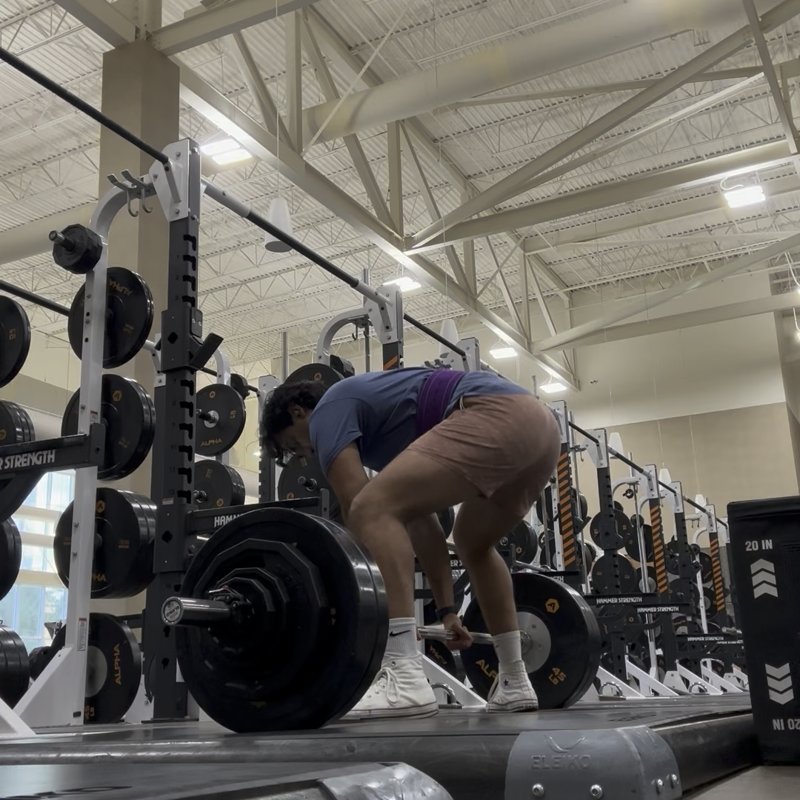
Log in to watch video demonstrations
Login to Watch3 video demonstrations available
Find more video demonstrations in the Gravitus app
Tips from the Community
-

Keep your chest up. If you had a banner across your chest, someone should be able to read it.
-

Point your feet at 45º or even wider.
-

Keep your shoulder blades retracted.
Track your progress with Gravitus
Download Gravitus to log your workouts, track your progress, and join a community of fitness enthusiasts.

Helpful Resources
One Rep Max Calculator
Find your one rep max for any exercise without maximal testing. Essential for developing effective strength training programs.
Calculate 1RMWorkout Programs
Follow structured workout programs created by fitness professionals to maximize your strength and muscle gains.
View Programs